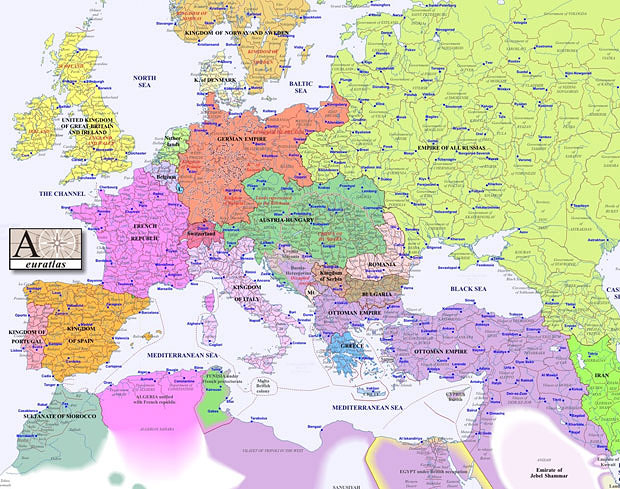The nineteenth century world was a world dominated by the aggressive imperialism from a newly united Great Britain and the development of nationalism in countries such as Italy battling for unification. The century witnessed the end of the Holy Roman and the crumbling of the Spanish, Portuguese, Chinese and Ottoman empires. After the Napoleonic Wars the newly formed United Kingdom under Queen Victoria established a strong British Empire to become the world’s leading power. The effects of the Industrial Revolution are best seen in the harnessing of steam power, resulting in the development of mass-production, transport, trade, distribution and consumerism. Entrepreneurship and the evolving professions strengthened the middle classes. The arts and leisure interests became accessible to more people as standards of living and education began to improve. There were new popular cultural interests such as the music hall, hobbies and cheap literature. Design, technology and commerce were united in London’s Great Exhibition of 1851, sometimes seen as the culmination of the Industrial Revolution. There were growing concerns about manners and taste (noting the eclectic styles of the 19th century, imitation and reproduction), with influential movements such as the Pre-Raphaelites and Arts and Crafts. The second half of the century saw the advent of widespread public museums, art galleries and libraries, one aspect of wholesale social reforms and moral ‘improvement’.
Towards the end of the century the second Industrial Revolution (electricity, steel and petroleum) entered America as a global power. Meanwhile the first Boer War (1880-81) and the Berlin conference began the imperial ‘scramble for Africa.’
The growth of Liberalism and Nationalism began to spread through Europe towards the middle of the century and the thoughts of Hegal, Marx and Bismarck were popular. Other important works included Charles Darwin’s Origin of Species published in 1859. Social change included a great reduction in slavery worldwide, a growing number of women’s rights campaigners and increasing animal rights and environmental campaigns.
The century was an era of widespread invention and discovery for Europe. Increased trade and knowledge of the world, meant accurate and detailed maps of the globe were available by end of the century. Significant developments in the sciences and technologies included the invention of photography and telephone and the discoveries of Louis Pasteur and Edison. Towards the end of the century invention and wide use of the steam train helped popularise travel.
The Realist and Romantic movements of the early nineteenth century gave way to Impressionism and Post-Impressionist modernism towards the end of the century.
Artist/ArtWork
Historical Map


